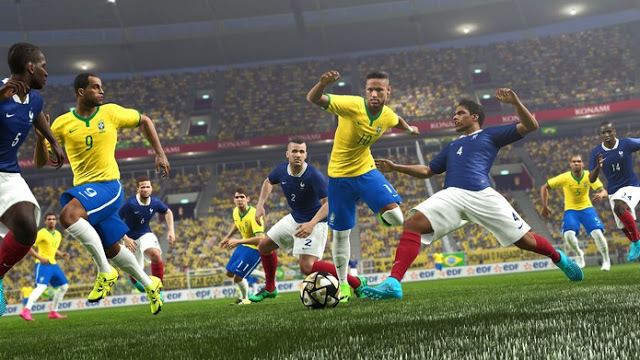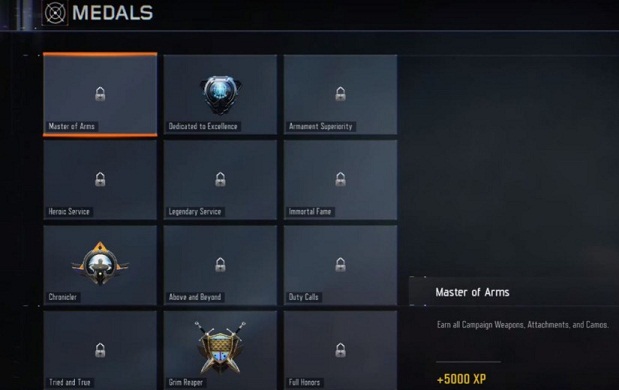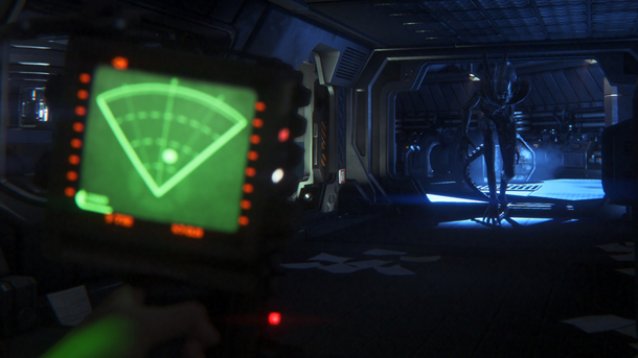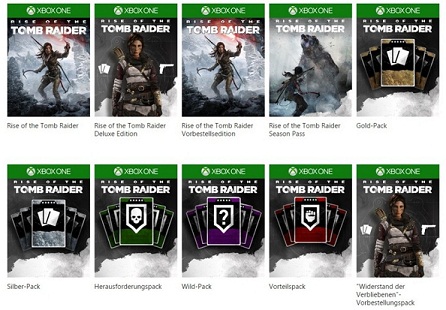

Being a fighter in the UFC takes years of hard work, determination, and a great bit of luck and skill. Fortunately for you, all it will take to have a shot a successful mixed martial arts career is a copy of UFC Undisputed 3. With UFC Undisputed 3’s career mode, you can create your own MMA persona, and take him from pretender to contender in a matter of days. This guide will help you figure out how to get the most out of your career in the UFC, and retire amongst the greatest fighters to ever participate in the sport.

We’ll show you how to create a fighter that suits your particular play style, how to get the most out of your training, what to look for in a fight camp, and what to do with all those sponsorship deals. It’s a long road to the top, but with this guide in your corner, you’ll be climbing to the top of the UFC rankings in no time.
Getting Started
Your first fight
Training
Gameplans
Camp Sessions
Sponsors and Upgrades
General tips
When starting a career, you have to options. You can choose to create a fighter completely from scratch, or take one of the real life fighters in either the UFC or Pride through a whole new career. Any of the UFC or Pride fighters will being a career at the age of 20, no matter how old they are in real life. If you decide to create your own fighter, you can have them be any age you want. There’s no particular benefit or detriment to either of the options, so you can’t go wrong picking either of the choices.

The first step is figuring out which of the game’s seven weight classes you want to fight in. There are four categories of attributes for every fighter: Strength, Speed, Cardio, and Footwork. Each attribute is based on a 100-point scale, and the seven weight classes have varying maximum ratings a player can achieve. Bantamweights have low-rated (85) strength and cardio, but have maxed out (100) speed and footwork. The opposite is true of heavyweights, who have maxed out strength and cardio, but low-rated speed and footwork. The other five classes all fall somewhere in between, so it’s really a matter of preference what division you want to fight in.
After picking a weight class and then creating your fighter (or choosing a UFC roster fighter), you’ll move on to picking a fight style. Even if you do choose a pre-existing fighter, you get to choose what style of fighter they’ll be. There are nine base styles to pick from: Boxing, Karate, Muay Thai, Kickboxing, Wrestling, Judo, Sambo, Jiu-Jitsu, and MMA. Eight of the styles come pre-loaded with some technique moves, while the MMA style allows you to pick a few special moves to give your fighter.
All nine of the styles also influence your starting statistics. Boxing starts you out with slightly higher striking. Karate starts out with slightly higher kicking. Wrestling starts you out with slightly higher takedowns. And so on. Each of the styles certainly has its benefits, but the MMA style does start you out with the lowest possible stats of all the available choices. That, coupled with the fact that all eight other styles come pre-loaded with several special techniques right off the bat, means it’s best to look elsewhere when just starting out a career for the first time.
Once you’ve decided on a style, you’ll choose fighting stance (orthodox, southpaw, or both), and a favored hand. From there, it’s off to the tutorials section. There are three tutorials to go through, each testing your acumen in either standup, the clinch, or the ground game. Each of the tutorials is rather simple. All you have to do is watch a short tutorial (which you can skip if you already played through the game’s general tutorial), and then participate in one-round sparring session to test your aptitude in that particular skill set. A meter on the bottom of the screen fills up based on your performance, and the better you do, the faster it will fill. The meter will only increase when you do things related to the skill you’re being tested on.

If you’re in the standup test, you should only be throwing punches and kicks. Engaging takedowns or clinching will not earn you any points there. The clinch test will only award you points if you engage your sparring partner in the clinch, and then attack. Straight punches and ground transitions will not earn you any points. Likewise, in the ground test, standing strikes and clinching will get you nowhere fast. It’s all about getting your opponent down to the mat, and then dealing out damage, and working on your transitions.
Test results are then graded on a five-star scale. Successfully earning a five-star rating will give you a five-point bonus in all related statistics. Gaining less than five stars will also get you a bonus, but it will be much smaller. A five-point instant upgrade is huge when just starting out your career. You only have to complete these tests once no matter how many careers you start. Since you can take the tests as many times as you want before continuing, it’s to your advantage to make sure you earn the highest maximum bonus before advancing to the next step.
From the skill tests, you’ll advance to a one-round sparring session with the computer that will judge your abilities, and then suggest a difficulty rating for your career. This is your first chance to put all of your combined knowledge to the test, though it should be noted that you won’t be automatically assigned a difficulty based on your performance. Though the game is judging your skills, it merely advises you set the difficulty to a particular setting. Once you do start your career, that difficulty will be locked in for the duration, so you’ll want to pick an option that offers a challenge without being completely frustrating when you advance to more challenging computer opponents.

You’ll also be asked to pick an energy setting before officially starting your career. Default is a bit more arcade-like energy. Fighters will get tired, but not very quickly. You’ll be able to throw more heavy punches and kicks, and working the ground game won’t tire you out as quickly. Simulation is a much more realistic energy setting. Fighters will get gassed after throwing a few stronger strikes, and constantly trying for transitions will cause you to tire out faster. If this is your first time playing a game in the Undisputed series, you may want to stick to the default energy setting. Though it should be noted, once you choose, that’s the setting that you’ll be using for the length of your career.
Now that you’ve entered the world of professional mixed martial arts, it’s time to schedule a fight. You’ll begin your career in the World Fighting Alliance, a sort of minor league system for the UFC. Here you’ll face off against a series of computer-generated fighters in an effort to prepare you for the eventual call-up to the big leagues. When scheduling a fight, there will be up to five different opponents to choose from. You can view each of the fighters’ respective rankings, records, attributes, fight history (for the last three fights), and method of victory. You’ll also be able to see some details on the fight card, including how much you’ll earn for the fight, and where on the card you’ll be fighting.

Each fight will have a few undercard fights, a few main card fights, and a main event. The major difference between the fights is how much cred you’ll make at the end of the event. Cred is Undisputed’s monetary system, and the bigger the fight, the more you’ll make. Every fight you schedule has a base amount of cred that you will earn no matter what. Winning will typically double the cred you earn, and you can also win nightly awards for knockout, submission, or fight of the night. Saving up cred will be a big help later on when purchasing upgrades, so during this early stage of your career, you should always take the fight with the biggest payout. Many of the WFA computer fighters are easy opponents, so you may as well make as much money as you can early on. After you look at all the factors and choose an opponent, it’s time to start training.
There are three things you can do to prepare for a fight. Training sessions allow you work out with the hopes of increasing your stats and attributes for the long term. Game plans help you earn a temporary one-fight boost of attributes and stats. Camp sessions will allow you to travel to one of six real fight camps to learn new technique moves for your fighter. Doing any of these three things will use up one action. Typically, you will have two actions to use to get ready for a fight. For your first three fights, you only get one action as a part of the game’s tutorial. Even if you have already completed one career, you will only ever get one action for your first three fights.
It’s important to make the most out of your actions, which can be rather difficult considering the handcuffs the game puts on you during the early stages of your career. Since your fighter has a limited amount of technique moves, it’s best to do camp sessions the first three chances you have. Now, you won’t be able to choose what you spend your actions on during the very first career you start because of the game’s tutorial. To get around this, simply start a career with a roster fighter, and go through the first three fights of a career just to get them over with. You’ll learn a bit more about how each of the pre-fight sessions works, and also have a chance to see how well you handle the difficulty settings you chose. By visiting a camp during the first three actions available to you, not only will you learn a valuable new technique move, but you’ll also be able to level it up to be more powerful. We’ll get to that in a moment, though.

You have to make it past your first fight before you can worry about the next one. No matter which of the opponents you chose for your first battle, the man on the other side of the octagon shouldn’t provide you with too much trouble. This is an excellent opportunity to test out your specific technique moves. Instead of rushing for a flashy knockout victory in the first few minutes, why not take the time to get your signature moves down pat? If you’re a striker, obviously you’ll want to go full bore with the striking. However, if you chose a style that is more focused on the ground game, you should be utilizing those abilities almost exclusively until they become second nature to you. By the end of your first fight, you should have a strong sense of who your fighter is in the octagon, which will allow you to better train for subsequent fights, and the rest of your career.
UFC Undisputed 3’s career mode offers fourteen different kinds of drills and sparring exercises to improve your fighter. Each of the various training methods will offer improvements in one or two different attributes, and will also add a few points to specific skill sets the drills are aimed at. Unlike Undisputed 2010’s career, there is no stat decay this time around. You can train freely in any of the sessions without worrying about untrained stats decreasing. It should be noted though that frequently using the same training sessions over and over again will lead to decreases in certain statistics. Like the individualized tests you took before starting your career, each of the exercises is rated on a four-star system. The higher you rank, the more your stats will improve during that session. Take a look at this list of the training exercises, and which attributes they will help increase.
Before beginning any drill, always select “manual” training. Choosing the “auto” option will always result in a two-star performance, which you can easily earn on your own in “manual.” The great advantage is, “manual” will allow you to perform better, and result in faster improvements for your fighter.

The Heavy Bag Drill tasks you with striking highlighted areas of a heavy bag from different blocks encircling it. It’s incredibly easy, and you can build up your fighter’s speed and footwork attributes rather quickly. The Heavy Bag Drill also improves standing strikes/kicks offense and defense statistics.
The Transition Drill puts you on the ground on top of a sparring partner. You will be directed to make your way to a specific mount (half-guard, side control, north-south, full mount, etc). It’s a great way to learn the more intricate transition controls, and will help improve both ground top and bottom offenses and defenses.
Like the Transition Drill, the Tire Flip Drill focuses on transitions. Unlike the Transition Drill, the Tire Flip mandates that you only use Pro controls. The benefits of the two drills are identical, though the execution is slightly different. The Transition Drill actually teaches you more than the Tire Flip though, so this drill is only for veterans of the series.
This drill primarily teaches you the basics of sway control. You’ll have to hit the trainer’s mitts, then sway out of the way of a strike from him. It’s a great teaching drill to get you used to sway, but the benefits are minimal at best. It only improves the standing strikes stats, so unless you only want to improve your punching, your time is better spent in other drills.

A fairly simple drill, Takedown Defense has you stopping balls from rolling past you to teach you to be quicker with flicking the right stick to defend against an opponent’s takedown attempts. The drill will help you improve takedown offense and defense, and will also improve kicking offense and defense. It’s actually the easiest drill to improve cardio and footwork, but training too often in this drill will affect standing strikes negatively.
Cage Control is all about getting your sparring partner up against the cage, and working from the clinch. In addition to improving your speed and footwork, Cage Control will also improve the takedown, clinch striking, and clinch grappling offensive stats. One of the strongest training drills to do, this session is great for those of you who like to get up close and personal with your opponents.
Though it only improves one of your overall attributes, the Defense Drill is great for building up your fighter’s kicking and striking defenses. All you have to do is block a few strikes from your opponent in succession, and you get really great results for the effort. However, training in this drill too often will eventually result in decreasing your takedown defense and ground grappling offense.
Stand Up Sparring puts you in the octagon against a partner, and you’ll have to strike and avoid attacks. Landing punches and kicks, as well as blocking or dodging your sparring partner’s will earn you points, while getting hit repeatedly will actually cause you to lose points. It’s a strong drill for advanced players, but newcomers may find their training time spent better elsewhere.
The object here is to push your sparring partner up against the cage, and deal out some damage. It’s a better version of the Cage Control drill because here, blows count struck from anywhere in the octagon as long as you are in the clinch. Clinch striking/grappling offense and defense will improve, as does takedown offense and defense.

Exclusively for fighters who like to take things down to the mat, the Ground and Pound session will benefit ground striking offense and defense, along with takedown and ground top grappling offenses and defenses. While it’s a good sparring session, the Transition Drill actually improves two of your attributes instead of just one, so there are slightly better benefits to the easier task.
Again, for those fighters that are looking to strengthen their resolve in dominant positions on the mat, Ground Top Spar will be a favorite. This is one of the few sessions that will help improve your submission offense and defense, while also boosting your ground top grappling offense and defense. This sparring session is great to throw in the mix every once in a while to make sure you are continuing to improve submission and ground defenses.
The exact inverse of the Ground Top Spar, you will be put on the bottom, less dominant ground position beneath an opponent. You’ll have to work at escaping and dealing damage. Again, one of the few drills that allows for improvement in the submission statistics, you will want to mix this session in every few fights as well. This is especially true if you keep finding yourself on your back, or being reversed on the ground.

All you have to do here is continually work for the takedown against a sparring partner. This is one of the best drills for building up takedown defense exclusively. If you’re looking for more benefits though, the Takedown Defense drill does offer more improvements in different attribute categories.
This is one of the easiest sparring sessions available. Merely attempting and completing a submission will earn you points. It’s a great way to familiarize yourself with the new submission mini-game, and builds up your submission offense and defense almost exclusively. Unfortunately, repeated training here will cause a decrease in standing strikes offense.
When training, it’s important to stick to exercises that benefit your fighter. If you chose to create a boxer, training in takedowns and submissions shouldn’t be as high a priority as training in striking and clinch drills. That’s not to say you shouldn’t train in those aspects at all, but for every three training sessions you do for a specialized skill of yours, you should try to sneak in one that will improve an aspect that your fighter isn’t quite as strong in. Fortunately, this year also offers the new Gameplanning option, which is a short-term fix for not being fully prepared for a fight.
Instead of using one of your actions for training or learning a new technique move, you can create a gameplan for an opponent. There are eight gameplans to choose from, each with a hefty amount of bonuses. Of course, there are an equal number of negatives to each gameplan as well, so you really have to be aware of how you’re planning to attack your next fight.

All of the gameplans have three objectives you must complete in a one-round sparring session in order to earn the highest possible benefits. Even if you don’t succeed in all three tasks, you will still earn some bonuses for your next fight. Every gameplan stat boost only lasts for the very next fight, and you only have to complete the objectives in the sparring session. Once you’re in the actual fight, you can approach it any way you want. It’s just best to stick to the script you decided on.
This gameplan is built all around striking, and ending a fight quickly. Big bonuses are doled out to standing strikes, kicks, and clinch and ground offense. You lose a bit of cardio and footwork, as well as seeing decreases in all of your defenses. Early on, this game plan isn’t a bad one to implement. The further you get in your career, the less viable an option this becomes.
You’ll lose a bit of strength, speed, and ground defense, but the big upgrades to cardio, footwork, and striking and kicking make this gameplan one of the most reliable in the game. Great cardio and striking can make all the difference in a fight, so always consider the Counter Attack plan as one of the top choices.
Striking, kicking, and takedowns all get boosted in this great gameplan. A great way to quickly boost stats to defend against opponents who have heavy ground tendencies, the Sprawl and Brawl is another gameplan that can be used for almost every fight. You lose a little ground game proficiency, but the upgrades you earn more than make up for it.

Only fighters with Muay Thai backgrounds need apply. The clinch gameplan is great for fighters who punish up against the cage, and can dish out big punches and kicks from up close. This isn’t a strategy that will work for everyone, and there are other strategies that offer similar benefits without relying exclusively on the clinch.
Fighters with a strong wrestling style would do well to utilize this gameplan. What you lack in standing strikes, you more than make up for in ground abilities. If you enjoy punishing opponents on the ground, this is without a doubt the gameplan for you. Anyone who prefers standing though would do well to avoid this plan.
This is the least impressive gameplan included. Unless you are a devoted submission artist, there is no reason to focus your entire gameplan around the submission. The increases you receive in submission ability don’t come close to outweighing the decreases in striking.

Like Sprawl and Brawl and Counter Attack, Stick and Move is another gameplan that works well throughout your career. Increases in footwork, speed, and standing strikes and kicks give you a great advantage over almost every opponent. You don’t get the cardio bump, and you do lose a bit of ground game ability, but most computer opponents will fall to this gameplan if you execute it properly.
The absolute worst gameplan both in the game, and in real life, Lay and Pray is based around you merely taking your opponent down over and over again. You get boosts to strength and cardio, as well as takedowns, but it’s a boring way to fight. You can get virtually the same bonuses from Ground and Pound, with the added bonus of better ground striking.
Gameplans are best used when you take a fill-in fight, and only have one action to use. You get tremendous boosts that should help you prepare better for a fight on short notice. Gameplans are also the cheapest training option in the game. Every training session, gameplan, or camp session you partake in will cost you some cred. The cred is taken out of your anticipated pay check, so you will never be in the negatives, and you will always be able to afford training.

There are six real life fight camps you can work with during your career. All six are open for your use at any time, though you can only learn or level one move per visit. Each of the camps offers a variety of new technique moves to learn for fighters of all proficiencies. You will eventually have the opportunity to join a gym full time. Once you join that gym, you are a member of that gym for the duration of your career. You can always decline, and keep sampling the moves from other gyms. Though, joining a gym gives you the added benefit of discounted training, and sparring with actual UFC fighters from that gym.
When looking at a gym for a new move, you should always be aware of the position that the move needs to be executed from. There’s a handy video player on the bottom of the screen, which shows you what the move looks like, and how it is used in a fight. Remember, the style you picked early on in your career already comes with three technique moves loaded (unless you chose MMA). You should look to build upon that move set with complimentary techniques. If you’re a big wrestler, a visit to AKA or Greg Jackson’s Gym would make the most sense. Wolfslair and Black House have excellent clinch moves for Muay Thai or Jiu-Jitsu fighters. If you want a more rounded experience, then American Top Team and Sityodtong have a little bit of everything, but lack a focus in one particular area.
Whatever moves you decide to learn, it’s important to level them up as fast as possible. The higher the level, the more impact the move will have when you use it. A level three left hook will do more damage than a level one hook. Higher level takedowns are tougher to stop, and will expend less energy to pull off. You can get a new technique move up to level three rather quickly in the game, and it should only take you three or four sessions of leveling to max a move out. Beware though learning too many moves. Your fighter only has a select number of button combinations they can have moves mapped to, so while it’s great to be a Jack of all trades, it’s more important to have a focused arsenal of moves that will help you win a fight from any position.

You should always have at least one strong kick, punch, takedown, and ground maneuver learned. Submissions can also be of benefit, however, unless you’re a submissions whiz, it’s more important to build up your fighter with actual strikes first. A hefty kick to the head has a higher chance of ending a fight quicker than fighting with an opponent on the ground as you try to sink in a submission.
Winning fights isn't the only way to earn cred in the career
mode. You can also have up to ten sponsors, which will pay you in cred for
having their logos on your shorts, shirt, hat, or banner. You’ll start off with
access to only a few sponsors, and as you progress farther into you career,
even more sponsors will come looking for you to endorse their brand. The more
faithful you are to a sponsor, the more cred you can earn from them.
Sponsorships can be leveled up, which will in turn lead to them paying you more
when you have their logo on your clothing.

If you’re just looking to make a lot of money incredibly fast, it doesn’t make a whole lot of sense to keep changing sponsorships throughout your career. Even though there are 34 different sponsorships you can unlock, you can make an incredible amount of cred by sticking with the earliest available, and leveling them up to earn you the maximum amount of cred every fight. You can have up to ten different logos on your shorts, shirt, and banner, but only four on a hat. All this sponsorship cred, coupled with your fight purse cred should give you a nice bankroll by your fourth or fifth fight (depending on how you’re performing).
Cred can be used for more than just training though. Remember, any cred you spent on training was already deducted from your winnings. Whatever money you have in the bank is used to buy new sponsorships and logos when you’ve earned them, and can be used to buy training and sparring upgrades. As great as it is to have more recognizable sponsors on your pants, it’s even more important to purchase new sparring partners and training programs as quickly as possible.

There are four levels of sparring partners to buy, and eight levels of training sessions to buy. New sparring partners will raise the level cap on all of your statistics, while new training programs will raise the level cap on all of your attributes. The moment you have enough cred, you should purchase a level two sparring partner. This will boost your stat cap to 80 across the board. Then the subsequent purchases you should make are for level two cardio, level two strength, level two speed, and finally, level two footwork. When you have the cap raised for all of your stats and attributes, you should repeat the pattern again for level three sparring and training. Purchasing new partners and programs is expensive, but you’ll be raking in the creds by the time your fighter is ready to upgrade to level three.
Now that you’ve got a solid idea of how the career works, and how to get the most out of all the features, we’ve got a few more tips to make sure your career is hall of fame worthy.
If you’re performing really well in the WFA, the UFC will come calling rather quickly. Unfortunately, your fighter will still have an overall rating in the high 60s/low 70s. Even the worst actual UFC fighters have ratings that start in the low 80s. Your career in UFC Undisputed 3 will last for 48 fights. At four fights a year, that’s more than a decade of work in a sport that has an extremely high turnover rate. It might sound crazy to not accept the offer to move up to the UFC, and the boost in cred that comes with it, right away, but why not continue to level up your fighter’s moves, and build up his stats and attributes to a more competitive level? 48 fights might not seem like a long time, but it’ll seem like you have even less time to make your mark when the UFC sends you back down to the WFA because you keep losing.

We already mentioned the importance of doing manual training earlier, but it bears repeating. Your fighter will not level up anywhere near as quickly by doing “auto” training all the time. Not only does the manual training give you better results, but it also refines your skills with the game’s mechanics. The new mini-games are just for training your fighter, they’re for training you. Repeatedly going through the same motions over and over again will make every control in the game feel like second nature, and eventually you and your fighter will be performing at optimal levels of punishiment.
Before you schedule your next fight, don’t forget to look at summary of his past fights and how he won them. It’s the best way to find out what type of fight your in for, and whether or not you need to gameplan to boost certain key stats quickly. The summary pages also show what your strengths are, and what your opponent’s strengths are. If you see that he’s got knockout power, work on staying out of his range. If he’s got great ground and pound, it’s time to work on your takedown defense. Undisputed 3 gives you all the tools you need to become the best fighter possible. You just have to make use of all of them.

If you’re finding a lot of success, or find your being met with a string of losses, you will get the option to change weight classes. Moving up in a weight class will add some challenge back into your career, and also enable you to become one of the few UFC fighters to ever win a belt at multiple weight classes. There’s no shame in moving down a weight class either. If you find yourself overmatched by the competition, maybe it’s time to think about dropping down to a lower weight class. Actual fighters drop down in a class way more often than they move up in one, and it’s all about finding a good balance of difficulty for your career.




 How to get Resident Evil Revelations 2 Line 'Em Up! Trophy / Achievement
How to get Resident Evil Revelations 2 Line 'Em Up! Trophy / Achievement Fallout 4: Memory Interrupted walkthrough
Fallout 4: Memory Interrupted walkthrough Teach Yourself Adobe InDesign for Free
Teach Yourself Adobe InDesign for Free Glitch Allows You To Get Unlimited Items From Chem Cooler In Fallout 4
Glitch Allows You To Get Unlimited Items From Chem Cooler In Fallout 4 Rise of the Tomb Raider Season Pass (DLC) at a glance
Rise of the Tomb Raider Season Pass (DLC) at a glance